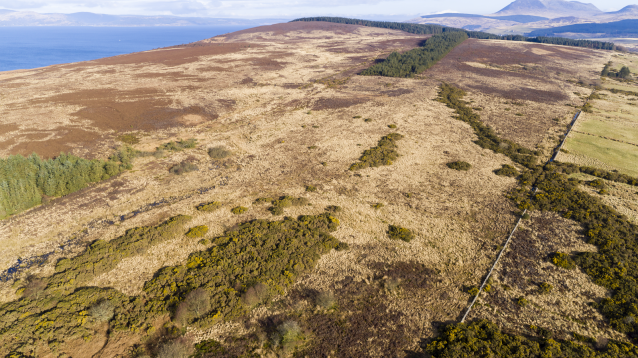It’s the only such monument to be discovered on the Isle of Arran.
Source: Live Science
A massive “cursus” monument, a site for ancient rituals, that was built around the same time as Stonehenge, has been discovered on the Scottish Isle of Arran.
Cursus monuments, which were constructed during the Neolithic period (4000 B.C. to 2500 B.C.) are long rectangular earthwork enclosures, meaning that they are built by modifying the land. The long enclosures were often outlined by timber posts and were used for ceremonial processions, possibly to honor the dead or worship ancestors. During some of those ceremonies, ancient people would have set those timber posts on fire, according to The Scotsman, which first reported the findings.
CLOSECircle Monument Near Stonehenge May Be the Largest of Its Kind in the UKVolume 0%PLAY SOUND
The particular monument, which survives as two parallel mounds, likely also had timber elements built into it, site discoverer Dave Cowley, the rapid archaeological program manager at Historic Environment Scotland, told The Scotsman. “Whether or not it was set on fire we just don’t know at the moment.”
Cowley and his team first discovered the monument site in 2017 while they were doing aerial surveys of the Scottish island using a technology called light detection and ranging (lidar), which unveils hidden structures by hitting the ground with lasers and measuring the light that reflects back. Lidar revealed two nearly parallel lines that extended out about 0.68 miles (1.1 kilometers) and were between 98 and 131 feet (30 and 40 meters) apart.
The team conducted field visits to the cursus monument between late 2017 and 2019. Those visits on foot didn’t reveal much: “Both banks are slight in nature and barely visible on the ground,” the team wrote in field notes posted online.
Though the structure is long, the individual mounds within it are only about 10.8 feet (3.3 m) thick and about 1 foot (0.3 m) high. “They appear discontinuous and to be made up of earth or turf with very few stones visible,” the team wrote. But it’s “impossible to say” whether the structure was designed with breaks in the mounds or whether they emerged over the years as a result of natural processes. In any case, the researchers don’t think the rectangular structure had a roof.
While roughly 70 such monuments have previously been found across Scotland, most of them on the east coast, this is the only one found on the Isle of Arran. And so it “may have been a focus for the communities spread across the island,” Cowley told Live Science in an email. Still there are other types of Neolithic monuments discovered on the island. “This is an interesting addition to the ‘portfolio’ of Neolithic monuments on Arran, and suggests that there may be more of these to discover on the western seaboard.”
The structure could have also been part of something bigger.
“There may be other buried features that we cannot see on the surface,” Cowley said. “Very few archaeological sites in Scotland are excavated, and whether or not it is will depend on research questions and funding.”
Source: Live Science

































Leave a Comment
You must be logged in to post a comment.